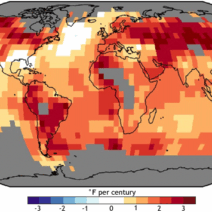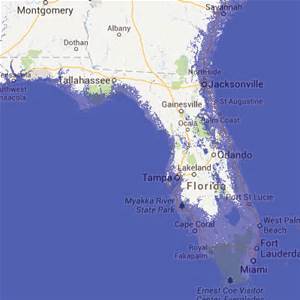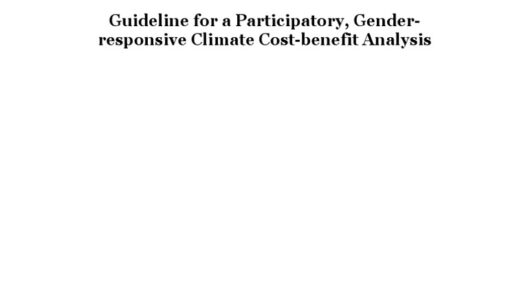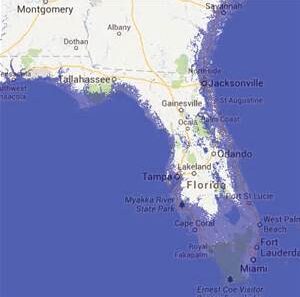As the environmental thermostat creeps upward, a phenomenon once relegated to the realm of dystopian fiction becomes our quotidian reality. The metaphorical wine cellar of human existence is increasingly rendered inhospitable by the oppressive heat of global warming, compelling society to engage in a multi-faceted adaptation strategy. This intricate tapestry of responses is not merely reactive but is evolving into a proactive approach aimed at mitigating the heat’s relentless encroachment into our daily lives.
At its essence, adjusting to extreme temperatures requires a renaissance of not just infrastructure, but also of mindset. The echoes of our ancestors whisper through the ages, reminding us of their resilience. As civilization evolved from nomadic tribes to urban metropolises, so too must our strategies for coping with increasingly unforgiving climates. Lush green cities of the past transitioned into concrete jungles, and now the very definition of “jungle” is shifting—one filled not with flora but with technology and ingenuity.
In the sphere of urban planning, cities are recalibrating their blueprints to embrace the realities of climate change. Green roofs, once considered a frivolous luxury, are now emerging as standard architectural practice. They perform dual duties: reducing heat absorption and providing vital green space amid the concrete expanse. These living roofs symbolize society’s increasing rapport with nature—a pact of coexistence rather than dominion.
The innovative use of trees in urban spaces cannot be overstated. A canopy of branches serves more than aesthetic purposes; it operates as nature’s air conditioning unit, significantly reducing ground-level temperatures. This is particularly vital in densely populated areas where heat islands have formed—regions that, akin to an oven left running, contribute to dangerously high local temperatures. Municipalities are now investing in extensive tree-planting programs, fostering the idea that the green infrastructure is as crucial as traditional roads and bridges.
Creating shade is just one avenue explored in this adaptation narrative. Ingenious engineering solutions such as reflective materials and cool pavements are gaining traction. Streets once suffocated under the midday sun are beginning to glisten in reflective white surfaces, a tactical maneuver against the relentless heat. These adaptations serve as a reminder that society is not at the mercy of climate change; rather, it can mold its environment in response to it.
However, adapting to heat is not merely an architectural concern; it extends into social realms as well. Family units, once shielded in climate-controlled homes, are now recalibrating their schedules to evade the sweltering sun. Work hours shift; social gatherings pluck twilight from the evening sky, illuminating the importance of both community and adaptability. The ancient philosophy of “siesta,” once unique to certain cultures, finds new relevance as individuals navigate the challenges presented by extreme weather.
On a larger scale, governments are layering their policies with climate resilience at the forefront. National strategies are emerging, akin to a patchwork quilt, with each piece contributing to the larger narrative of survival. Climate action plans that resonate with urgency are beginning to populate legislative agendas. These policies are not just reactive measures but are becoming ingrained as a core principle in the governance of societies worldwide.
Our agricultural practices must also adapt to cacophonous weather patterns, which have become a reality. Farmers, attuned to the rhythms of the earth, are now compelled to rethink seasonal planting and harvesting. The introduction of drought-resistant crops and innovative irrigation techniques resembles a choreography of survival, with each movement symbolizing humanity’s indomitable will against Mother Nature’s whims. This is not just survival; it’s a revolution in sustenance.
Moreover, as sea levels rise and floods become a commonplace occurrence, coastal cities are confronted with existential dilemmas. The specter of retreat from the shoreline looms large, urging societies to construct barriers and resilience hubs, akin to the fortifications of ancient civilizations. Here, government bodies and community organizations align to create sustainable flood management systems designed to bond with the river or sea rather than attempt to subdue it. In this way, society acknowledges its vulnerability while also embracing opportunities for adaptation.
Beyond the societal and infrastructural realms, the realm of technology burgeons with solutions that can only be described as imaginative. Innovations stemming from silicon laboratories are exploring ways to either predict or reflect extreme weather events. Artificial intelligence algorithms are now pivotal players in forecasting severe heat, aiding urban planners and vulnerable communities alike in strategizing their response. These futuristic viewpoints are all threads in the broader social fabric, interweaving our responses into a coherent strategy for adaptation.
Community engagement plays a pivotal role in this adaptation symphony. Local initiatives empower citizens with knowledge and resources, creating a grassroots movement that embraces sustainability. Workshops, seminars, and community gardening are sprouting like wildflowers as individuals come together, sharing not just space but also ideas. This collective consciousness around climate resilience fosters a significant cultural shift: from passive observers of environmental degradation to active participants in the healing process.
Each of these threads—urban planning, agricultural adjustments, technological innovations, and community empowerment—forms the intricate tapestry of our societal response to global warming. While challenges abound, the interplay between adaptation and resilience unfolds a narrative steeped in ingenuity and hope. Weaving together old practices with cutting-edge solutions, society is not merely surviving the heat; it is emerging, resolute and transformed, from the furnace of climate change. In this dance of adaptation, we are reminded that though the seasons may change and the sun may scorch, humanity’s spirit thrives, unyielding as ever.








